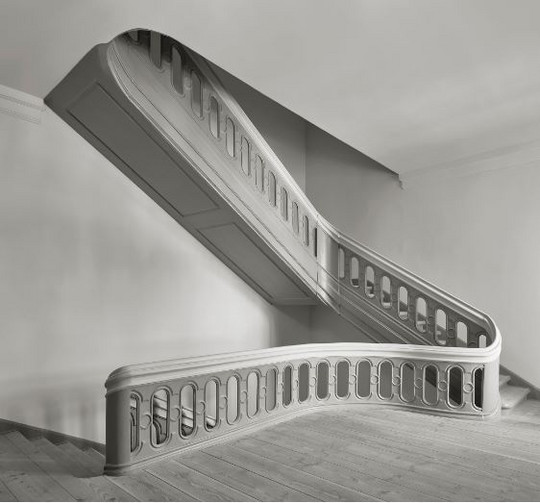
Fractures and Infinite Space – The Baroque Revisited
A number of designers and architects from the Royal Danish Academy open new doors to the baroque in a contemporary perspective.
During the Baroque era several artists, including the architect behind Officinet, Lauritz de Thurah (1706-1759), developed new design principles. These were linked to a new cognitive space that arose when Renaissance cosmology and a hierarchical world order began to disintegrate.
Interrupted profiles, so called ‘forkrøpninger’ in Danish, that made offsets in plan or section, created the same effect as double-exposed photographs. Together with glossy surfaces and mirrors, they destabilized spatial boundaries so that the separation between exterior and interior, nature and culture was brought into question.
An increased focus on recycling building parts and materials
Photographer Anders Sune Berg's images of Lauritz de Thurah’s architecture have revealed a vanished world of forms. These forms have been investigated by designers and architects at the Royal Danish Academy: Maria Sparre-Petersen (lecturer and glass artist), Flemming Tvede Hansen (lecturer and ceramicist) and the architects Suzi Pain (assistant professor), Natalie Koerner (assistant professor), Jacob Bang (lecturer ) and Anne Romme (lecturer). Through design experiments the exhibitors explore how this forgotten treasure of spatial and material effects can inspire contemporary design practice.
Exhibition opening: Thursday 11th of april from 16 – 19.












